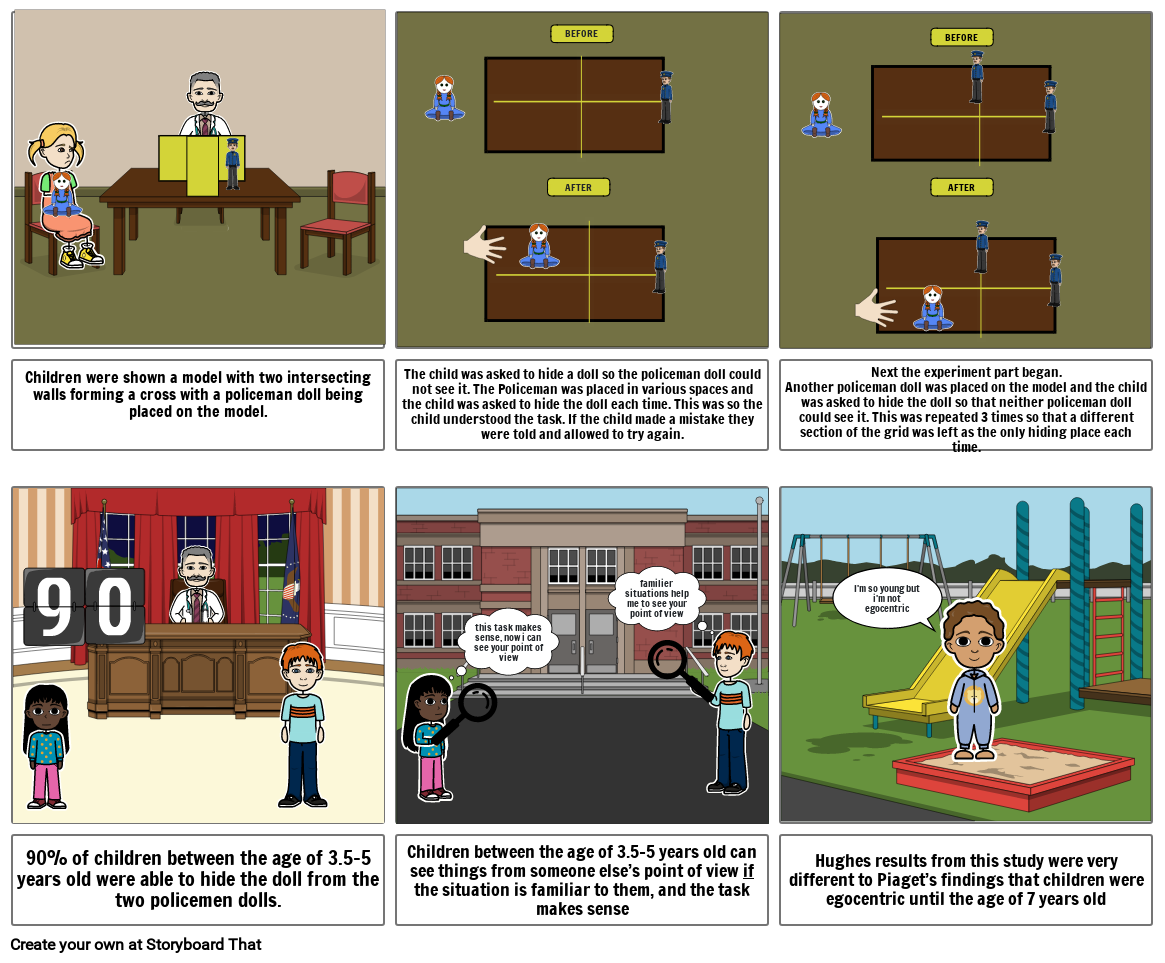Policeman doll study

Storyboard Text
- AFTER
- BEFORE
- AFTER
- BEFORE
- Children were shown a model with two intersecting walls forming a cross with a policeman doll being placed on the model.
- The child was asked to hide a doll so the policeman doll could not see it. The Policeman was placed in various spaces and the child was asked to hide the doll each time. This was so the child understood the task. If the child made a mistake they were told and allowed to try again.
- this task makes sense, now i can see your point of view
- familier situations help me to see your point of view
- Next the experiment part began.Another policeman doll was placed on the model and the child was asked to hide the doll so that neither policeman doll could see it. This was repeated 3 times so that a different section of the grid was left as the only hiding place each time.
- I'm so young but i'm not egocentric
- 90% of children between the age of 3.5-5 years old were able to hide the doll from the two policemen dolls.
- Children between the age of 3.5-5 years old can see things from someone else’s point of view if the situation is familiar to them, and the task makes sense
- Hughes results from this study were very different to Piaget’s findings that children were egocentric until the age of 7 years old
Over 30 Million Storyboards Created
No Downloads, No Credit Card, and No Login Needed to Try!
